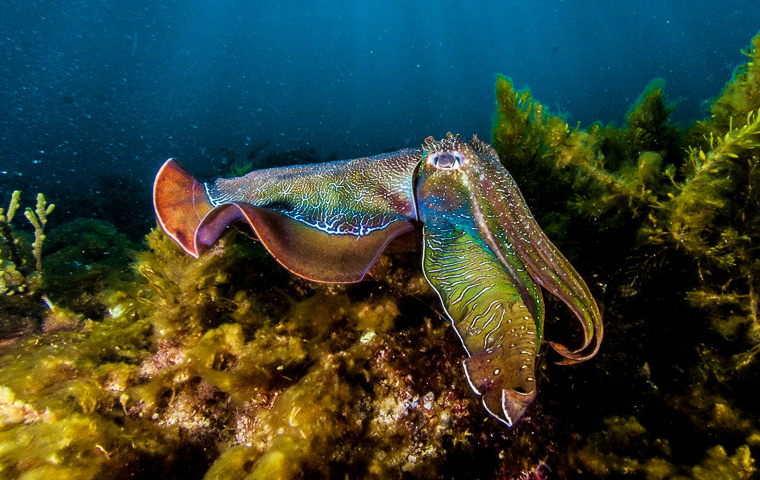
Lifting the (bubble) curtain on cuttlefish protection
It’s the latest innovation in curtain technology and no it isn’t available at your local Spotlight store.
The SA and federal governments have team up to invest in something called a ‘bubble curtain’ and its part of an intervention strategy aimed at safeguarding Australia’s iconic giant cuttlefish population from the algal bloom.
What is it and how does it work?
A 200m x 100m air bubble curtain will be installed on the Cuttlefish Coast in the Upper Spencer Gulf with an aim to protect about 50,000 to 80,000 cuttlefish eggs and hatchlings laid over winter.
Air bubble curtain technology creates an underwater barrier that can mitigate the effects of algal blooms by disrupting the movement of algae, preventing it passing through the bubble curtain.
Bubbles are created using land-based generators and compressors to pump air through underwater feeder lines and tubing to create a buffer zone two metres to seven metres deep along the rocky reef.
Air bubble curtains have never been used in South Australia before, and the installation will be an important trial of this technology.
It works as a preventative barrier and is therefore ineffective for areas where the algal bloom has already been detected.
While bubble curtains have been successfully trialled in Western Australia to protect kelp from fish, there are limitations to where and when they can be used.
They won’t, for example, protect oysters from brevetoxins, nor can they be deployed across vast areas or in intertidal zones.
How does the air bubble curtain work? Prof. Mike Steer explains
When will it be used?
The air bubble curtain will only be turned on if and when the bloom is detected nearby.
At the moment, the algal bloom is present on the western side of Spencer Gulf and is moving north, but has not arrived at Point Lowly.
The Department for Environment and Water and SARDI are monitoring the site in consultation with cuttlefish and algae experts to determine when the curtain needs to be turned on.
Marine parks and harbour restrictions will be enforced through a 50 metre perimeter around the curtain. The site will be monitored by cameras and surveillance too.

Cuttlefish season wrap-up
The giant cuttlefish is an iconic South Australian marine animal and they are of special significance to those of us that live in the Upper Spencer Gulf.
Protecting this iconic species from the effects of the algal bloom requires innovative approaches and we are hopeful this technology can help preserve one of our states truly unique marine animals and the tourism it drives.
The cuttlefish breeding season has now finished, and most of the giant cuttlefish have left the area. Cuttlefish naturally die after spawning, and this should not be linked to the algal bloom. So, it is normal for dead cuttlefish to wash up along the coast.
Cuttlefish eggs will start to hatch in late October through November.
The latest giant cuttlefish counts show an estimated population at Cuttlefish Coast of 63,374, compared to 81,420 in 2024.
The lowest cuttlefish population estimate was approximately 13,500 in 2013. The highest population estimate on record is 247,146 in 2020.
Related stories
- Visit the Algal Bloom Update site for news, updates and official advice
- South Australia’s algal bloom — all your questions answered
- What it’s like to go swimming with the Giant cuttlefish
Stay in the know: Sign up to get updates from DEW, straight to your inbox!